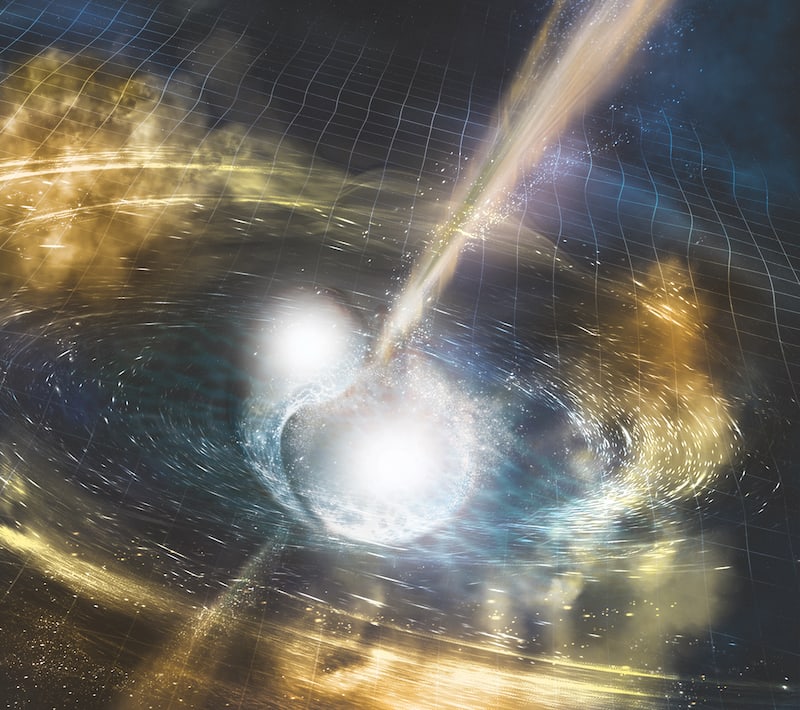Last year was an extraordinary year for multimessenger astrophysics. In August 2017, a gravitational wave and its electromagnetic counterpart emission were detected from a pair of inspiraling neutron stars. Only a month later, a high-energy neutrino was detected at the South Pole and electromagnetic follow-up observations helped identify the first likely source of very high energy neutrinos and cosmic rays.
Since then, the dream of astrophysicists has been to join neutrinos and gravitational waves in the detection of a multimessenger source. According to our understanding of the extreme universe, a possible scenario would be a neutrino created in the relativistic outflows of a merger of binary neutron stars or black holes or the core-collapse of a supernova, all cataclysmic cosmic environments that should also produce gravitational waves.
The IceCube, LIGO, Virgo, and ANTARES collaborations have used data from the first observing period of Advanced LIGO and from the two neutrino detectors to search for coincident neutrino and gravitational wave emission from transient sources. The goal was to explore the discovery potential of a multimessenger observation, i.e., of a source detection that needs both messengers to confirm its astrophysical origin. Scientists did not find any significant coincidence. The results, recently submitted to The Astrophysical Journal, set a constraint on the density of these sources.

The detection of gravitational waves and neutrinos from a single source would set a new milestone in multimessenger astronomy, allowing the simultaneous study of the inner and outer processes powering high-energy emission from astrophysical objects.
A joint detection would also significantly improve the localization of the source and enable faster and more precise electromagnetic follow-up observations. The scrutiny of an astrophysical source with three different messengers would not only be the next breakthrough in the field but would also confirm that multimessenger astronomy is the only path to a profound understanding of the extreme universe.
Even though the current search was very limited in time, researchers have set a strong constraint for joint emission from core-collapse supernovas, while binary mergers remain secure as potential multimessenger sources of gravitational waves and high-energy neutrinos.
This study used datasets, spanning less than 2.5 months, that are also limited by LIGO’s sensitivity, which will soon improve by a factor of 2. The addition of new LIGO and Virgo data as well as from IceCube and ANTARES will greatly increase the sensitivity of joint searches. In the longer term, future next-generation neutrino and gravitational wave detectors will boost the potential of discovery for these searches.
+ info “Search for Multi-messenger Sources of Gravitational Waves and High-energy Neutrinos with Advanced LIGO during its first Observing Run, ANTARES and IceCube,” ANTARES, IceCube, LIGO, Virgo Collaborations: A. Albert et al., The Astrophysical Journal 870 (2019) 2, iopscience.iop.org, arxiv.org/abs/1810.10693